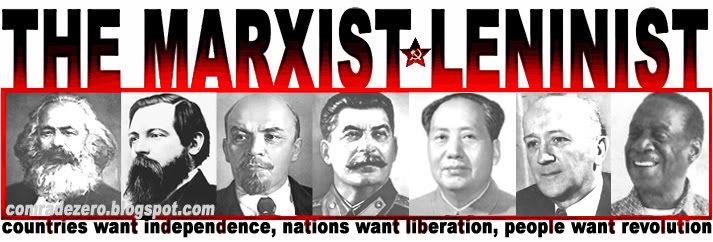Freedom Road on Maoist Revolution in Nepal

Maoists Sweep Constituent Assembly Elections in Nepal
Commentary by Josh Sykes
A new day had dawned in Nepal. After fighting a decade-long people’s war, which led to a coalition government replacing martial law imposed by the King of Nepal, the Communist Party of Nepal (Maoist) is leading the Constituent Assembly elections in Nepal. The vote counting is not completely finished, but at the time of this writing the CPN (Maoist) has won a total of 120 seats, with the opposition Nepali Congress Party coming in a distant second at 37 seats. The Communist Party of Nepal (Unified Marxist-Leninist) won 33 seats, but following the their election defeat their ministers have resigned from the coalition government cabinet.
 A total of 601 seats are up for grabs in a complex voting system. According to the Interim Constitution of Nepal adopted in 2006, a ‘mixed system’ must be utilized for elections to the Constituent Assembly. The ‘first past the post’ system determines 240 members of the Constituent Assembly while a proportional representation system determines the other 335 directly elected members. With 120 of the total 240 first past the post election seats, the Maoists should win at least 100 more seats through proportional representation emerging as the single largest party, much to the surprise of the western media who expected the CPN (Maoist) to come in third, behind the Congress Party and CPN-UML.
A total of 601 seats are up for grabs in a complex voting system. According to the Interim Constitution of Nepal adopted in 2006, a ‘mixed system’ must be utilized for elections to the Constituent Assembly. The ‘first past the post’ system determines 240 members of the Constituent Assembly while a proportional representation system determines the other 335 directly elected members. With 120 of the total 240 first past the post election seats, the Maoists should win at least 100 more seats through proportional representation emerging as the single largest party, much to the surprise of the western media who expected the CPN (Maoist) to come in third, behind the Congress Party and CPN-UML.The purpose of the Constituent Assembly is to draft a new constitution for Nepal following the ouster of the monarchy as a result of the people’s war led by the Maoists. According to the CPN (Maoist), the elections represent the beginning of the New Democratic process for Nepal. This refers to a two-stage revolutionary process, wherein a bloc of progressive classes, led by the CPN (Maoist), first intend to move through a ‘New Democratic’ phase of the revolution, build a People’s Republic of Nepal and eliminate the vestiges of feudalism and imperialism before moving on to the construction of socialism.
 According to Dr. Baburam Bhattarai, one of the main leaders of the Maoists, the victory of the CPN (Maoist) in the constituent assembly election is the direct result of the protracted people’s war. “The people were looking for total change. We advanced the political agenda for total change during the decade-long people’s war. We have people from different castes, ethnicities, genders and people from different regions. The main agenda of the people’s war was to restructure the state. It took ten years of the people’s war to establish our political agenda. The people felt that the country’s socio-political and economic structure needed a complete overhaul. So we couldn’t look at things through our old lenses. The media and the elite missed the picture. As a result, the CA results surprised many. The ground realities had changed and they helped us to emerge as the largest party."
According to Dr. Baburam Bhattarai, one of the main leaders of the Maoists, the victory of the CPN (Maoist) in the constituent assembly election is the direct result of the protracted people’s war. “The people were looking for total change. We advanced the political agenda for total change during the decade-long people’s war. We have people from different castes, ethnicities, genders and people from different regions. The main agenda of the people’s war was to restructure the state. It took ten years of the people’s war to establish our political agenda. The people felt that the country’s socio-political and economic structure needed a complete overhaul. So we couldn’t look at things through our old lenses. The media and the elite missed the picture. As a result, the CA results surprised many. The ground realities had changed and they helped us to emerge as the largest party." The CPN (Maoist) waged armed struggle against the Nepali government from 1996 to 2006 based on the military theories developed by Mao Zedong through the course of the Chinese Revolution. The Nepali’s strategy for people’s war, called Prachanda Path, after the founder and Chairman of the CPN (Maoist), Prachanda, involved combining the strategy of surrounding the cities from the countryside with insurrectionary actions in the urban centers. During this process, the CPN (Maoist) established its immense popularity among the masses of workers and peasants of Nepal through radical agrarian reform, fighting with determination for the rights of women and oppressed nationalities, labor organizing and student mobilizations. (For more information about the people’s war in Nepal, see Movement fights poverty and oppression in Nepal, September/October 2005.)
The CPN (Maoist) waged armed struggle against the Nepali government from 1996 to 2006 based on the military theories developed by Mao Zedong through the course of the Chinese Revolution. The Nepali’s strategy for people’s war, called Prachanda Path, after the founder and Chairman of the CPN (Maoist), Prachanda, involved combining the strategy of surrounding the cities from the countryside with insurrectionary actions in the urban centers. During this process, the CPN (Maoist) established its immense popularity among the masses of workers and peasants of Nepal through radical agrarian reform, fighting with determination for the rights of women and oppressed nationalities, labor organizing and student mobilizations. (For more information about the people’s war in Nepal, see Movement fights poverty and oppression in Nepal, September/October 2005.) The people’s war was able to advance relatively quickly because the U.S. has been tied down elsewhere, most notably by the resistance in Iraq, and has been unable to intervene to the degree that it has against similar struggles in the Philippines and Colombia. The U.S. has given some military aid to Nepal’s monarchy but has not been able to commit a sizable number of troops. Because of the U.S.’s overextension, these and other movements, such as the people’s war being led by the communists in neighboring India, have been able to make advances.
The people’s war was able to advance relatively quickly because the U.S. has been tied down elsewhere, most notably by the resistance in Iraq, and has been unable to intervene to the degree that it has against similar struggles in the Philippines and Colombia. The U.S. has given some military aid to Nepal’s monarchy but has not been able to commit a sizable number of troops. Because of the U.S.’s overextension, these and other movements, such as the people’s war being led by the communists in neighboring India, have been able to make advances.Following King Gyanendra’s dissolution of the parliament and seizure of absolute power in early 2005, the CPN (Maoist) joined with other parties in an alliance to oust the king and establish the constituent assembly elections that are now taking place. The CPN (Maoist)’s People’s Liberation Army grouped their military forces and arms into ‘cantons’ under the supervision of U.N. monitors, in 2006 as part of the peace process.
 The repressive measures instituted by Gyanendra were very unpopular and at this time only a handful of Hindu fundamentalists tied to the old feudal system still support the king.
The repressive measures instituted by Gyanendra were very unpopular and at this time only a handful of Hindu fundamentalists tied to the old feudal system still support the king.Former U.S. president Jimmy Carter, whose Carter Center has been observing the elections, said that he hopes the United States will drop the CPN (Maoist) from its terrorist list and recognize the Maoist government.
The U.S. is driven by its own interests however - the maintenance of an empire in service of a corporate elite - and it is possible that it may attempt to intervene against the democratically elected Maoist government, as it did when Hamas was similarly elected in Palestine.
 The elections paint a very different picture of the Maoists than a group of ‘terrorists’ as the U.S. government insists. The elections demonstrate that the CPN (Maoist) has been very popular in Nepal throughout the difficult period of the people’s war, and additionally gives the lie to claims that the guerrillas ruled the countryside through terror and intimidation. It demonstrates clearly that there is a call from the people of Nepal to end imperialism and feudalism and to work toward the possibility of a socialist future.
The elections paint a very different picture of the Maoists than a group of ‘terrorists’ as the U.S. government insists. The elections demonstrate that the CPN (Maoist) has been very popular in Nepal throughout the difficult period of the people’s war, and additionally gives the lie to claims that the guerrillas ruled the countryside through terror and intimidation. It demonstrates clearly that there is a call from the people of Nepal to end imperialism and feudalism and to work toward the possibility of a socialist future.Josh Sykes is a member of Freedom Road Socialist Organization.
(Originally posted on the FRSO website: http://www.frso.org/about/statements/2008/nepal.htm)
Also from FRSO:
Resolution in Solidarity with the Revolutionary Movement in Nepal and Against U.S. Intervention (May 2007)
From Fight Back! News:
Movement Fights Poverty and Oppression in Nepal (July 2005)
On the Verge of Revolution in Nepal (April 2006)

Labels: Antirevisionism, electoral politics, Fight Back, FRSO, Maoism, national liberation, Nepal, New Democracy, People's War, South Asia








1 Comments:
I am back blogging on Nepal at
http://democracyandclasstruggle.
blogspot.com/
Post a Comment
<< Home